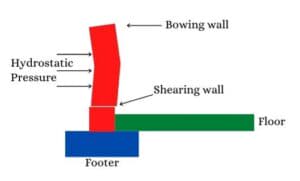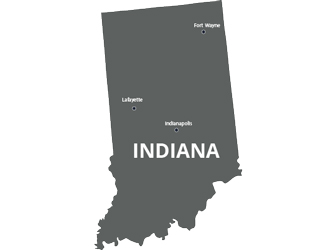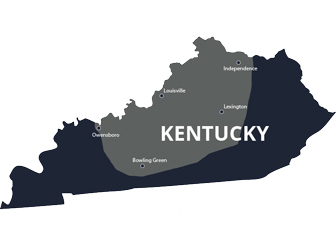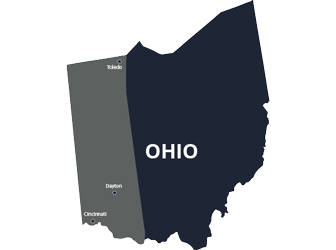Originally posted 2/25/19, revised by Kelly Kater 8/27/20
Foundation shearing is a sign your wall is under serious stress. We’re talking about cramming the night before a major exam for a class you’ve skipped regularly and thought you could coast through- only to realize this one test is your entire grade and you won’t graduate if you fail. That level of stress.
Acculevel has been repairing foundations – and restoring homeowners’ peace of mind- since their start in 1996. Over the decades, we’ve stabilized homes for tens of thousands of customers; we use the best materials and the best installation methods, guaranteeing our work for the lifetime of the structure.
We’re going to explain what foundation shearing is, what causes it, and the best ways to repair it. We’ll also provide some additional resources for you, to answer questions about pricing, warranties, and how to find a well-qualified contractor to repair your home.
What is Foundation Shearing?
When your foundation is shearing, this means one section is breaking away from another. This particular type of break primarily happens with concrete block foundations. It usually occurs after your basement wall begins to crack and bow inward. The stress of this bowing pulls the wall away from the bottom row of the block wall. Here’s a simplified illustration of how this works:

The author freely acknowledges that she is not a high-quality illustrator.
The ground outside of the house pushes against the wall, creating hydrostatic pressure (more on that in the next section). As the wall weakens under pressure, it begins to lean inward. If the wall were poured concrete- all one solid piece- it would likely bow more evenly.
But the bottom row of blocks is braced against the floor, so it cannot move with the rest of the wall. So the bowing wall pulls at the base of the wall but can’t move it; this tension cracks the mortar and breaks the connection between wall and base. This broken connection is where the wall shears.
What Causes Shearing?
The number one culprit is water around the foundation. Hydrostatic pressure is the formal name for water-saturated soil pushing against the foundation. This water can be the result of too much rain, poor grading around the home, faulty guttering, even a naturally high water table. Whatever the source, when water collects around your house, it doesn’t like to stay there. It pushes against the house, trying to find its way through the foundation. Concrete is a porous material, so it may succeed. It’s not uncommon to have water leaking into the basement along the bowing and shearing.
Water can also erode the soil underneath the foundation, and erosion can cause the footer to shift. This leads to the foundation settling unevenly, which can also strain the concrete. Often, when this happens, cracks form in the foundation. Erosion is especially problematic if the ground beneath your home was not compacted properly. Dirt needs to be compressed (compacted) to remove air pockets and make the dirt as dense and stable as possible.
Can Shearing be Repaired Effectively?
Absolutely. Repairs can be effective and permanent, if performed by an experienced foundation contractor. Foundation repairs are not a good place for DIY or cost-cutting measures. Everything in your house is resting on that foundation and you need it to be stable and secure.
Repair Options for Wall Shearing
I. Carbon Fiber Straps: If the wall is bowing less than 2 inches, and the shearing is less than 1.5 inches, carbon fiber straps are the easiest and best repair method. They don’t require excavation, can be installed entirely from inside the basement, and are the least expensive option. We have a blog that explains carbon fiber straps in detail, from what carbon fibers are to what the installation will cost.
II. Wall Anchors and Helical Tiebacks: These are more expensive and invasive methods of repair, when compared to carbon fiber straps. But they are equally effective at securing a wall with a more significant bow or shear. The determining factor here is what is outside the basement wall.
- Wall anchors require excavation about 10 feet outside the affected wall. If that 10 feet takes you across your property line, or runs into objects that shouldn’t be moved (pools, septic systems, propane tanks), you should get helical tiebacks instead.
- Tiebacks do not require excavation. The steel rod used for stabilizing the wall is screwed into the ground outside the foundation, but this is done through the basement wall.
For a more thorough explanation (with professionally drawn diagrams), we have a blog that reviews both anchors and tiebacks in detail.
III. Wall Straightening: this is not a repair method, precisely. But you will notice that none of the previously mentioned solutions said anything about straightening the foundation wall. This is because they are all focused on stabilizing the wall. If you specifically wish to have the wall returned to its original position, you will need to have it straightened, first.
To straighten a wall, a contractor must excavate the outside of your foundation. This relieves the pressure on the basement wall. The wall can then be pushed back into position, using hydraulic jacks inside the basement. Once straightened, the wall will still need to be secured by one of the methods we discussed above. If the wall has failed once, it is likely to do so again without any reinforcement to strengthen it.
What’s the Next Step?
Do you have a wall that is unstable? No matter what type of issue if it’s cracked, bowing, shearing, settling, or some combination- you need to contact an experienced and reputable contractor right away. This is not a problem you can ignore, nor will it improve without intervention.
If you live in Indiana or the surrounding areas, call Acculevel! One of our friendly customer care representatives will schedule a free appointment for you. Our knowledgeable project managers will evaluate your home and provide a written estimate, valid for 12 months.
If you don’t live in our service area, please make sure you verify that your contractor is insured and accredited by the Better Business Bureau.
Not familiar with the process of finding or meeting with a contractor? We offer a free downloadable guide of questions to ask a contractor. This can help you interview and vet companies,to find the best fit for you and your home repairs.


















